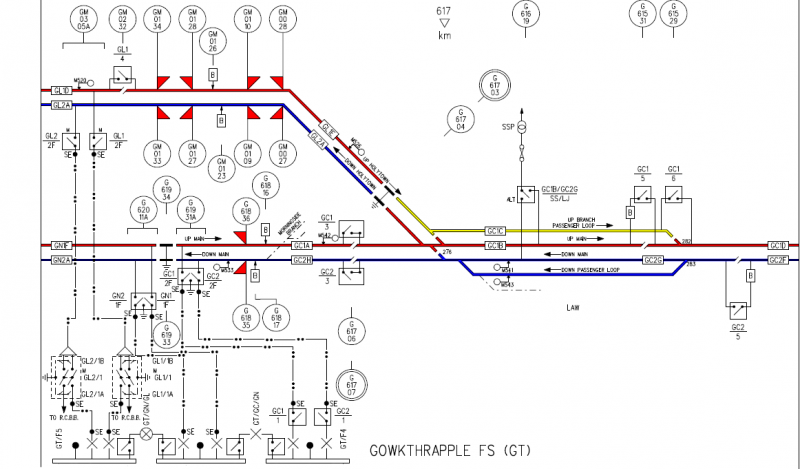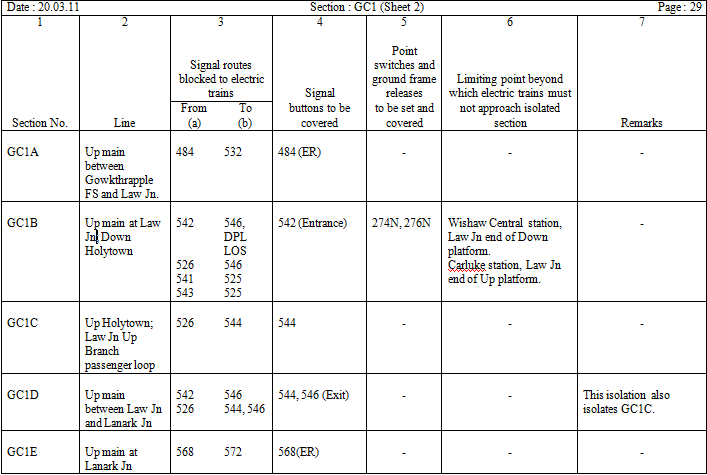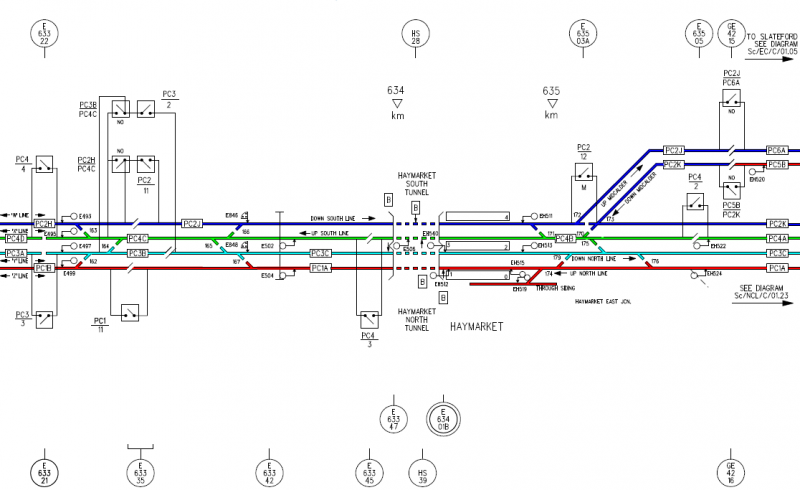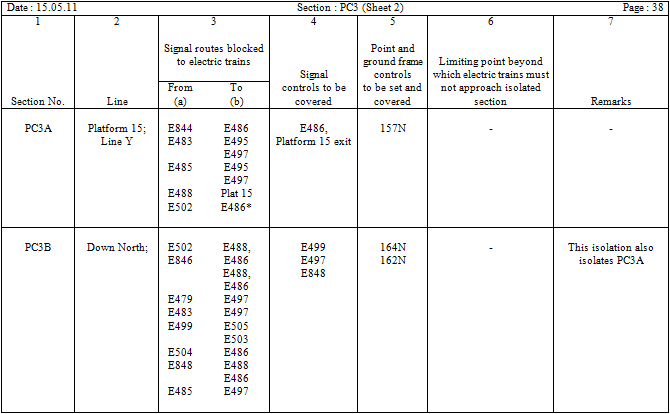Ron_J

335 posts
|
As mentioned in another thread, on occasion electrified lines require to be blocked to electric traction either because of a fault or as part of the process to electrically isolate a particular section or subsection. The block to electric traction is arranged between the Electrical Control Operator (ECO) and the Signaller or Signalling Shift Manager. The ECO and Signaller/SSM are both issued with a set of "isolation diagrams" which give a graphical representation of how the electrified lines are sectioned and which signals protect each electrical section and subsection. The signaller uses the Block to Electric Traction instructions (more commonly known as the isolation instructions) to check which signals or points need to be collared to protect the block.
The front page of the instructions (in this case for Motherwell) gives instructions on what should happen:
Quote:INSTRUCTIONS TO THE SHIFT MANAGER AND SIGNALLERS AT MOTHERWELL SIGNALLING CENTRE IN CONNECTION WITH THE ISOLATION OF OVERHEAD LINE EQUIPMENT
The isolation instructions are detailed in the following pages, showing affected signal routes together with necessary protection. In addition to normal reminder appliances, isolation strips are provided. Where a semi-auto signal number (unqualified) or an emergency replacement button is listed in column 4, you must operate the button concerned to place the signal to danger before the reminder appliance is placed over the button. All other buttons listed in column 4 must be Normal before you use the reminder appliance.
You must not allow an unsignalled electric train movement towards an isolated section unless:
• the train is proceeding to a limiting point shown in column 6 and you have carried out the provisions of the Rule Book, Module AC, Section 11.1,
OR
• specially authorised in column 7.
You must fix the isolation strips on the signalling panel to give a visual aid to the location of an isolation of the overhead line equipment. These strips are coloured as shown below. You must use each colour as follows:
Red Strip - Section blocked to all trains ;
Yellow/Blue Strip - Section blocked to electric trains only.
Where red and yellow reminder appliances are available, you must use these as follows:
Red - Section blocked to all trains ; Yellow - Section blocked to electric trains only.
When you are instructed to protect an isolation of a complete section or sub-section, you must immediately place the appropriate isolation strip on the signalling panel and use the appropriate coloured reminder appliances on the buttons/switches concerned; thereafter the movement of trains must be governed by the circumstances of the isolation.
In emergency, a failure or fault within a section requires the complete section to be put out of use. The electrical control operator will give preliminary advice of the circumstances to the shift manager at this centre and you must not allow any train movement within the section concerned until:
• you have found out what has happened, and
• you are satisfied that it is safe to do so.
If a movement is already in progress within the section concerned, you must stop the movement as quickly as possible until you have made sure that it is safe to be continued. In these circumstances, you must immediately:
• place the red isolation strips on the panel, and
• place red reminder appliances on the respective buttons/switches.
When the fault has been located and it has been confirmed that trains other than electric trains may run over the affected parts of the line concerned, you must replace the red isolation strips and red reminder appliances by yellow/blue isolation strips and yellow reminder appliances.
You must carry out the following when a line(s) or connection(s) is unwired on a temporary or permanent basis:
temporary unwiring - you must place isolation strips on the affected lines(s) and connections leading to such line(s); you do not need to use button/ switch reminder appliances.
permanent unwiring - as for temporary unwiring except that you must keep the isolation strips on the line(s) concerned for a period of three weeks.
I've attached a couple of SimSig relevant examples below. Try to imagine how you would block the really simple electrical subsections of GC1B at Law Junction and PC3B at Princes Street Gardens...




Post has attachments. Log in to view them.
Log in to reply
The following users said thank you:
officer dibble, welshdragon |



